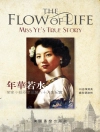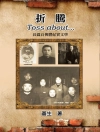The Field Marshal was a born commander and, besides being a gifted linguist, was mobilised as a Subaltern for the Boer War to act as a secret agent and to streamline the peace process. With an appetite for battle, in WW1 he became the Allied C-in-C of the Expeditionary Force in North Russia and, being ranked as a knighted Major General at the age of 39, he then modernised the Staff training to deal with armoured and aerial warfare. His Generalship was tested out in the Raj and, in 1939, on the day war was declared, the British Army leadership as CIGS was placed in his hands, so that he was able to defend Calais and free-up the BEF escape route to Dunkirk. Back in business as C-in-C Home Forces he was given his baton. Ironside surely had one of the most varied and long military careers of any military leader in the 20th century.
लेखक के बारे में
EDMUND IRONSIDE served in the Royal Navy and, after succeeding to his father’s title, went on to a varied career with, amongst others, Marconi and Rolls-Royce. He was for many years an active member of the House of Lords, focusing on scientific issues and defence procurement, and was Honorary Secretary of the all-party Defence Study Group. He also served as Vice President of the Institute of Patentees and Inventors, and was the first President of the Electric Vehicle Association. He edited High Road to Command, based on his father’s diaries covering the years 1920–22.












